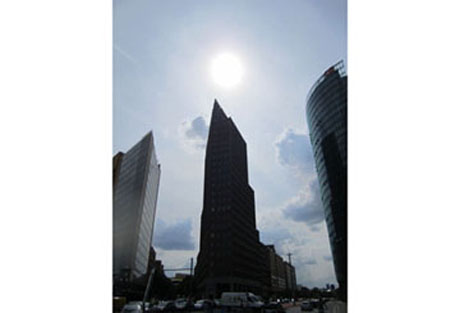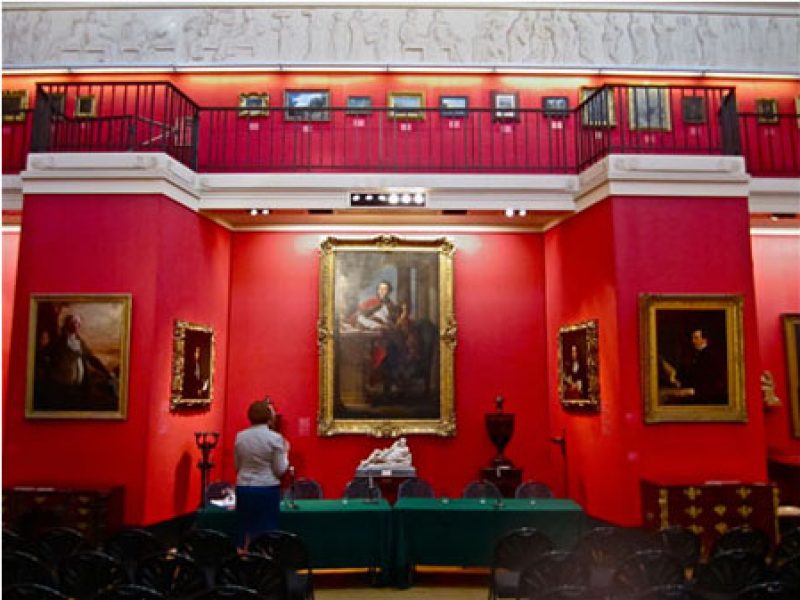It’s not often that there’s big money on offer for any kind of project in Berlin, which is maybe why weird things happen when there is. Like Potsdamer Platz for example, the post-’89 architectural spectacle of capital where the buildings we’re meant to celebrate instead feel like they not only slice the sky into slivers, but one’s own body too, while the taste of metal grills hangs heavy on the tongue.
And it was just such a bodily impact that I don’t think I was alone in experiencing at the recent opening of the set-piece survey show Based in Berlin. Like, I literally just couldn’t bring myself to go into the main venue at Monbijoupark on the opening night (though I have been back since, I promise) – the sludge of self-congratulation and competition was so thick on the ground. I’m not made for these things, or maybe just not yet. I’ll try to explain.
A hurriedly assembled initiative of the city’s mayor, Klaus Wowereit, the controversy and opposition to the exhibition’s original format will stick to it like a litany and has been well reported. Originally pitched as an exploration of the necessity for a new, permanent Kunsthalle in Berlin, nobody seemed to believe that the mayor’s desire to bolster his own reputation was very far behind what was really a barely deceptive altruism and an instrumentalisation of artists that was also, at the same time, utterly disconnected from the majority of artists’ experiences of living and working in the city.
An über-curatorial triad of guardians was engaged – Klaus Biesenbach, Christine Macel, Hans Ulrich Obrist – who deferred to a team of five on-the-ground, in-the-city youngsters with a research budget of around €600,000. Their plan: To combine an open call for submissions with pro-active studio visits for the sake of a worthy, representative overview, initially scheduled to take place in a temporary, purpose-built exhibition venue, with an additional budget of €1million.
In response, a brilliant, furious – and actually rare – mobilisation of a temporary alliance of what is otherwise a wildly diverse, sprawling and often lugubrious, disparate artistic “community” ensued under the banner Haben und Brauchen (To Have and To Need). Their open letter to the mayor published in the local and national press can be found here. Remarkably, dialogue between the organisers and the opposition occurred. It seemed to me that significant concessions were made – the open call was re-worded, the purpose-built venue abandoned, more money pledged to the selected artists rather than fancy-designed shacks. Interesting process.
I’d met with one of the curators who wanted to discuss my own participation in the show and hadn’t minced my own objections despite also agreeing to consider an invitation should one me made. Well, that never happened – apparently a consensus for my participation couldn’t be found. Which was alright, because in reality I couldn’t actually find a consensus for my participation either, even though – like most I suspect – I’m happier making work than not making it and that’s what would have guided me. Really, never mind.
And I mean, now that the show has opened, really never mind. I’m clearly at least ten years too old to have been considered young enough, for one thing. But that aside, one has to wonder whether this show represents the city, its scene and conditions at all (if I even consider myself yet to be properly a part of it which I don’t think I do). Or whether instead it reflects nothing much more than the generic exhibition-making of global biennialism etc. by which we are all already made sick and subject.
By which I mean, I’m not questioning anyone’s decision to participate (some were also Haben und Brauchen signatories after all, some I know, some are close friends and I support them), nor, here, exactly critiquing the work exhibited. But for an exhibition that still describes itself in its leaflets to be assuming a representatively “dynamic” form it is strangely indistinguishable from a perfectly familiar and digestible Smörgåsbord of art industry fodder – that was, with a little help from some celebrity endorsement, of course lauded by the pretty funny myth-spewing of the general press as an instant success.
Split between five venues here is the format and familiar texture of institutions and reclaimed run-down spaces, of event, exhibition, multiple media, local initiatives, famous and unknown names, graphic design, scale, spectacle and hospitality that we know. This show was never going to speak to the city despite the best efforts of some residents’ attempts to speak to it. (Or despite the special (triumphalist?) viewing platform from which Berlin can be seen beneath us, that Herr Wowereit insisted be built). No. It is a communication between those who sanction such exhibitions in the first place and all of those who are in turn sanctioned by it, a kind of self-supporting (power) structure. People with money like these sorts of things. And “we” like them.
I love Berlin, even though I’m still coming to know it and my impressions of it assume no precedence or authority, and maybe this is why, but still I do not recognise it here, sewn-up – stitched-up – resolved. This show so thoroughly speaks to the cultural gravy train as to feel like something has been taken away rather than been given form – formerly a specific place, a situation from which to speak “represented” as an any-place, a null-and-void, even though many may still well benefit from it and even if I don’t think that such benefiting is absolutely always wrong. But it’s not just a city that disappears by these means.
What horror such competence! What alienation. What, in fact, such a logical outcome of a process of position, opposition, negotiation. What depression. Of course we’re left with assimilation into a seamless promotional event of everything that was awkward, difficult, blatant or exploitative in the project’s original outline. A reputation saved. What naivety not to expect to be surprised quite like this. And what work to be done now.
Ian White




